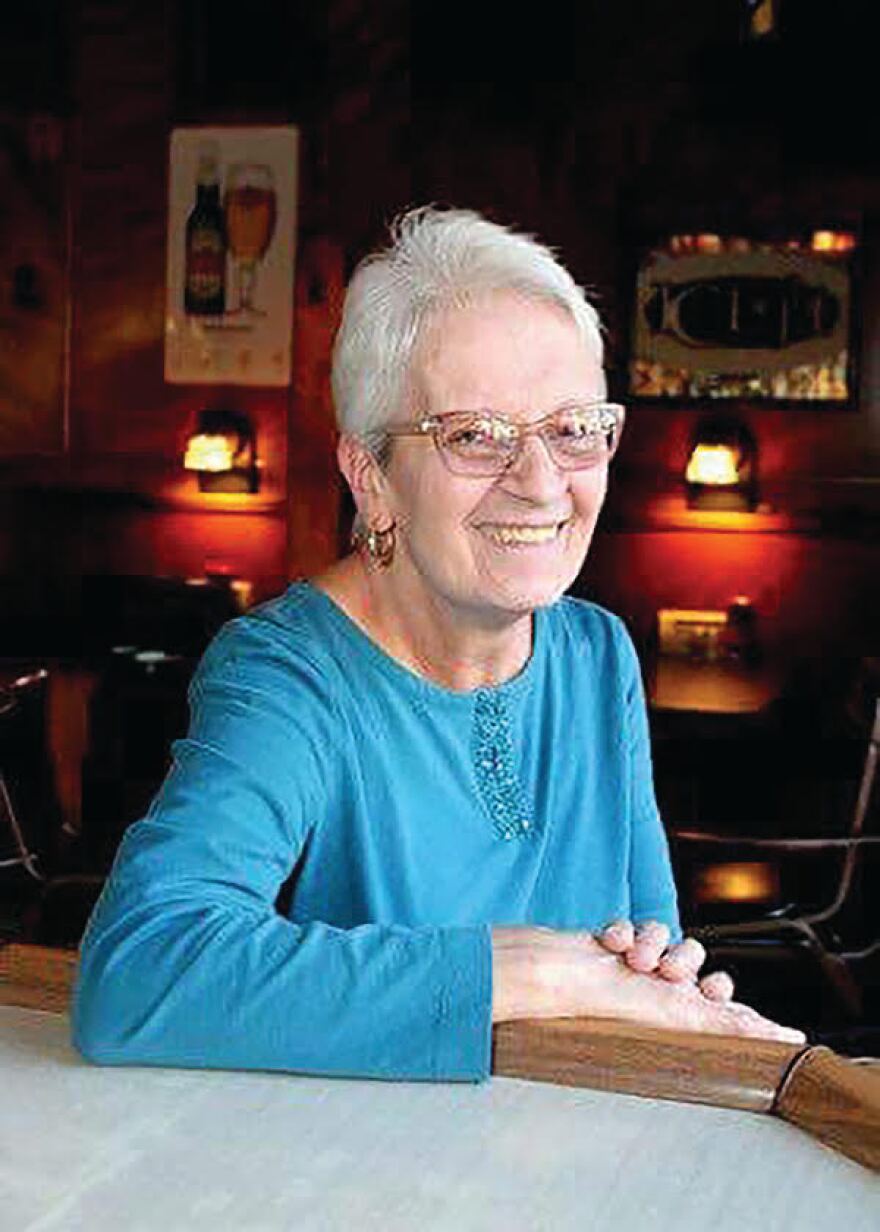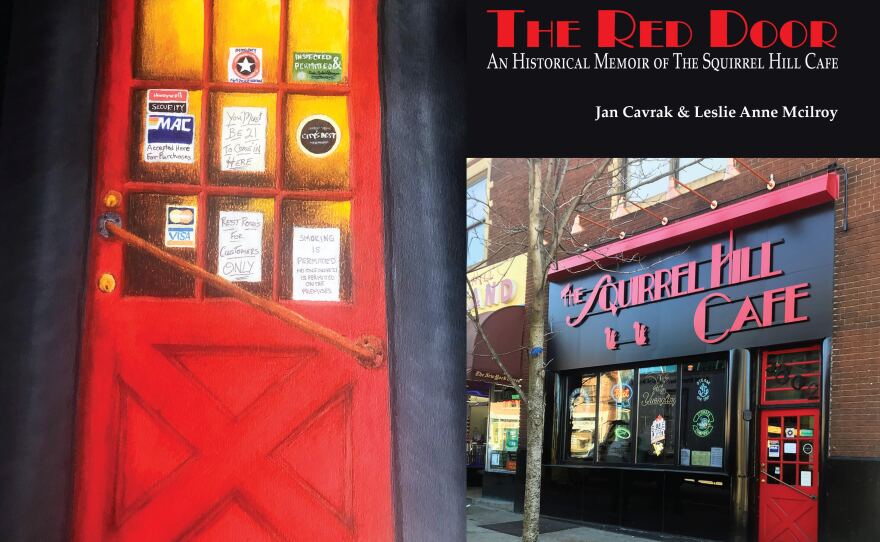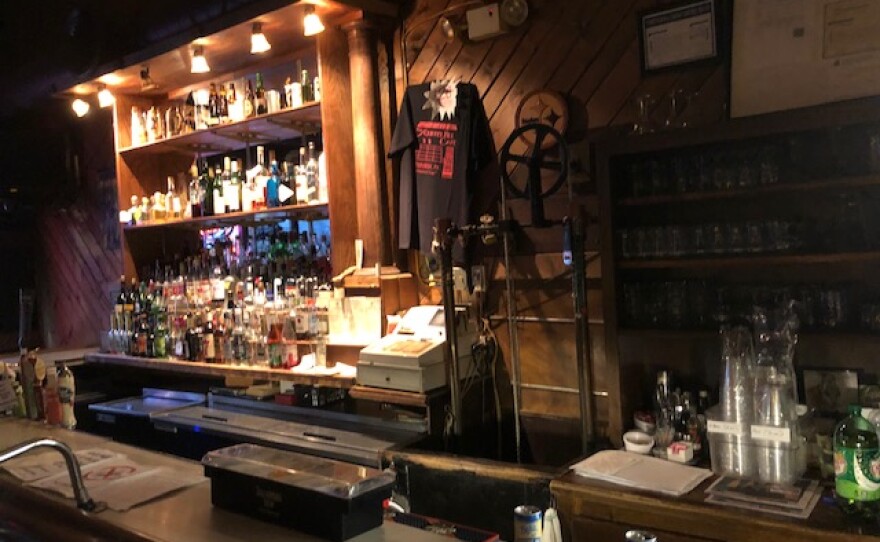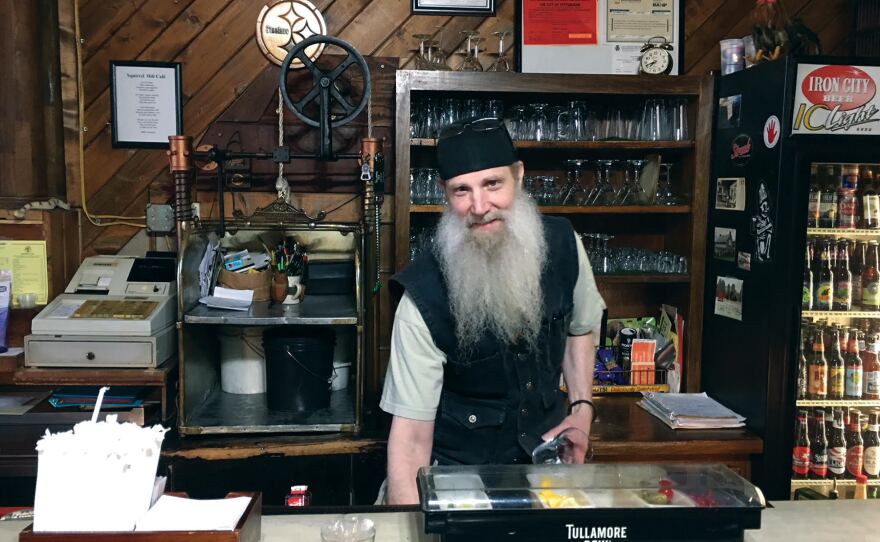The Squirrel Hill Café is one of those taverns that seems like it’s always been there. And in a way, it has: The one-time fruit and candy store near the corner of Forbes and Murray avenues became a restaurant and lounge in 1934, just after Prohibition ended.

The place known as the Squirrel Cage has since evolved a bit, of course, just as have Squirrel Hill and Pittsburgh as a whole. But as a new book documents, the Cage – homey, dimly lit, loud but not too loud, often smoky – has also demonstrated remarkable continuity.
“The Red Door: A Historical Mémoire of the Squirrel Hill Cafe” (Main Street Rag) is by former bartender Leslie Anne McIlroy and Jan Cavrak. The latter, a daytime bartender, is the Cage’s longest-serving employee. She started waiting tables there in 1980.
“It’s a good bar. I’ve met so many different people over the years,” said Cavrak, now 68, in a recent interview at a booth at the Cage, which had just reopened after several months dormant due to the coronavirus pandemic. “I have my customers. Some of them customers turn into friends, then after so many years, it’s like family.”
Cavrak thought that family warranted a book. She recruited McIlroy, a poet and professional copywriter who worked at the Cage for a decade starting in the mid-1980s and retains her affection for the joint.
“It was a joy. I feel kind of honored that I got to work here,” said McIlroy, in the booth across from Cavrak. “I always thought if I ever got married, I would get married here.”
"I feel kind of honored that I got to work here"
The bar’s known for its eclectic clientele – “from lawyers to landscapers,” McIlroy likes to say. She and Cavrak tracked down key figures in Cage history, or those who knew them. McIlroy wrote essays and interview pieces, while Cavrak collected testimonials from more than 100 patrons, including regulars past and present.
“That part of the book was people giving me pieces of paper with their experiences they had here,” she said. “From meeting their spouse coming in after work to have a drink, just their experiences: ‘I love the grill cheese.’ Somebody wrote that. Simple as that.”
“But we do have good grilled cheese,” Cavrak added. “We have good bread.”
McIlroy said the book was a labor of love for the two women. “We met every Monday night for two years at least. Every Monday night she’d come in with whatever she got from the bar that week. I’d read to her what I’d written.”

“The hardest thing about this book was getting Jan to stop,” said McIlroy. “I kept saying to her, ‘No more! We’re done now, OK? We’re done now!”
The 148-page volume comes complete with color photos, old menus and even an original painting of the Cage’s distinctive façade, by painter and Cage fan Kitty Correal. The book captures the high-ceilinged space’s quirks, from its tiny bathrooms and the odd little mezzanine in the rear to the famous – and still operating – dumbwaiter behind the bar, for transporting goods to and from the basement.
Another quirk: the brief, shallow ramp that greets you at the front door and rises a few inches to the bar’s “main floor.” Cavrak said it comes in handy for spotting customers who shouldn’t be getting any more to drink. “If I don’t like how you’re walking up that ramp, which is a great thing to have, besides for wheelchair … If you’re wobbling, go, simple as that,” she said.
McIlroy is especially proud of compiling a thorough history of the Cage. The Squirrel Hill Cafe was founded by Mike Paterni, the Italian immigrant who’d run the fruit-and-candy shop there for years. (It was Paterni, according to blueprints unearthed by McIlroy, who oversaw creation of the Cage’s distinctive art-deco façade, complete with squirrel silhouettes, in the mid-’30s.)
The Café served three meals a day, including steak dinners, and 10-cent shots of whiskey. It appears to have marketed itself as a tony lounge.
“The front of the menu was like a cocktail glass and a rose! It’s not like the dive Cage!” said McIlroy with a laugh.
"It's like a community"
Among the contributors to the book is Paterni’s nephew, Jack Nieri. Nieri was an undergraduate engineering student at the University of Pittsburgh when, in the late ’50s, he filled in as daytime bartender for a couple weeks. The café in those days was located by a busy street-car stop, and Nieri recalls arriving at 7 a.m. to greet a line of day-shift commuters waiting for him to open the door so they could start their day with something high-test.
By then, shots of liquor ranged from 25 cents to 45 cents for top-shelf, says Nieri, now 81 and retired in South Carolina. But the regular customers didn’t want to waste time with a substitute barkeep.
“Instead of telling me what they wanted, they’d just shake their head like I was supposed to know. And I’d have to beg ’em for the answer!” he said.
The Cage has had only a handful of owners since. The most high-profile was probably Ronny DeLallo, of Bethel Park, who ran the place for nearly three decades, until his death, in 2004. DeLallo cooked everything from scratch, including the popular soups.
Cavrak recalled one of the late DeLallo’s holiday traditions.

“Every year, two weeks before Thanksgiving, we’d have a pre-Thanksgiving dinner,” she said. “He’d made two to three turkeys. In the steam table, we had real mashed potatoes, yams, a vegetable, cranberry.”
McIlro jokingly recalled that DeLallo bought his Thanksgiving pies at Giant Eagle, then added whipped cream to suggest they, too, were homemade.
Cavrak added that DeLallo’s sense of hospitality was more than skin deep: “He said to me one time, ‘That may be the only Thanksgiving dinner somebody may get.’”
And why's it call "the Squirrel Cage"? The provenance of the nickname is murky, but Cavrak and McIlroy report it seems to have something to do with the vertical bars that mark the front window.
The Cage has been owned since 2004 by Patty and Rod Oliverio. (The Oliverios were not available to comment for this story.) Its biggest moment was its cameo as one of the places Anthony Bourdain visited in the 2017 Pittsburgh episode of his popular TV travel show “Parts Unknown.” The bar went unnamed in its cameo, but it was where Bourdain sat down to share a pint and a meal, and talk local history, with Pittsburgh-based novelist Stewart O’Nan.
Speaking of writers, the Cage has a history of attracting literary types, from Pittsburgh Post-Gazette columnist Tony Norman (who contributes a brief essay to “The Red Door”) to the late, legendary novelist and Pitt professor Chuck Kinder.
After Cavrak, the longest-serving employee is Billy Nagel, widely known as Billy the Bartender. He’s been behind the big wooden bar almost continuously since the mid-’80s.
“It’s like a community. And it’s not all one type of person. It’s not all bikers or all truck drivers or all doctors and lawyers. It’s quite an eclectic mix,” said Nagel, one of the dozen or more current or former staff whose remembrances round out the book.
He hasn’t even seen drinking habits at the Cage evolve all that much, he said. After all, in the ’80s, the Cage was among the first bars in the area to stock craft beer. (McIlroy ruefully recalls DeLallo’s $1.15 import nights, which left her with too many 10-cent tips.) And while the beer selection has grown, the craft-cocktail craze has seemed to pass the Cage by. “It’s mostly still a shot and a beer,” said Nagel.
Cavrak judges the Cage’s success partly by former regulars who come back to visit: “When they got back in here, … or they’ve come back to revisit it, and they always say, ‘I couldn’t wait to get back to the ’Burgh, and I’m so glad this room hasn’t changed.’”
More information on "The Red Door" is available from the publisher, here.








